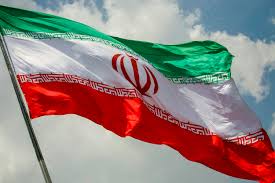Oil markets posted solid gains on Tuesday as geopolitical tensions between Iran and Israel entered their fifth day, with benchmark crude futures climbing despite the absence of any concrete supply disruptions from the Middle East’s key producing region.
Brent crude futures, the international benchmark, rose 54 cents to $73.77 per barrel by 0730 GMT, marking a 0.7% increase. U.S. West Texas Intermediate crude gained 58 cents, or 0.8%, to trade at $72.35. The session was characterized by heightened volatility, with both contracts initially surging more than 2% before retreating and subsequently recovering.
The price action reflects the market’s ongoing struggle to balance immediate supply realities against the potential for broader regional disruption. While industry sources confirm no visible supply losses have materialized from the conflict, traders continue to price in a risk premium as hostilities persist between two major regional powers.
“The conflict between Iran and Israel is still fresh and brewing, and investor sentiments may still be holding on to the ‘war risks’,” said Priyanka Sachdeva, senior market analyst at Phillip Nova. The analyst noted that additional market volatility stems from the anticipation of the Federal Reserve’s policy decision, with the Federal Open Market Committee meeting beginning Tuesday.
Energy executives sought to reassure markets about operational continuity in the region. Eni’s chief executive stated that the Israel-Iran conflict has not resulted in oil production losses while emphasizing that OPEC maintains spare production capacity to address potential shortfalls. Similarly, Baker Hughes CEO Lorenzo Simonelli confirmed that all of the energy services company’s Middle East facilities continue operating normally.
The market’s cautious optimism was tested by conflicting signals from the conflict zone. Iranian media reported explosions and heavy air defense activity in Tehran, while air raid sirens sounded in Tel Aviv as Iranian missiles targeted Israeli positions. These developments underscore the volatile nature of the situation despite diplomatic efforts to contain the crisis.
Adding to market uncertainty, President Donald Trump issued a social media post Tuesday urging “everyone” to evacuate Tehran, a statement that could signal either escalatory rhetoric or advance knowledge of planned military action. The same administration reportedly floated the possibility of renewed nuclear negotiations with Iran, highlighting the complex diplomatic dynamics at play.
Iran’s position as OPEC’s third-largest producer amplifies market concerns about potential supply disruptions. The Islamic Republic’s strategic location along the Strait of Hormuz—through which roughly one-fifth of global oil passes—presents additional risk scenarios that traders are closely monitoring. Any Iranian retaliation involving the Strait could create immediate supply bottlenecks affecting global energy markets.
The situation was further complicated by reports of a vessel collision involving two ships near the Strait of Hormuz, though details remain limited. Such incidents highlight the heightened risks facing commercial shipping in the region, where energy companies must navigate both geopolitical tensions and operational hazards.
Monday’s trading session had seen oil prices decline more than 1% on reports suggesting Iran was seeking to de-escalate the conflict. However, the subsequent resumption of hostilities has reinforced the market’s risk-on sentiment, with analysts noting that uncertainty itself has become a price-supporting factor.
The oil market’s response illustrates the delicate balance between current supply fundamentals and geopolitical risk assessment. While OPEC’s spare capacity provides a cushion against immediate shortages, the potential for conflict escalation continues to support higher price levels as traders hedge against worst-case scenarios in one of the world’s most critical energy-producing regions.
As the situation develops, market participants will be closely watching for any signs of production disruptions, changes in shipping patterns through key maritime chokepoints, and diplomatic efforts to contain the crisis before it impacts global energy supplies.
WHAT YOU SHOULD KNOW
Oil prices rose Tuesday despite no actual supply disruptions from the Iran-Israel conflict, driven purely by market fears of potential escalation. While Iran is OPEC’s third-largest producer and controls access to the critical Strait of Hormuz shipping route, current production remains unaffected, and spare capacity exists to cover any shortfalls.
The price increase reflects traders betting on “what could happen” rather than “what is happening”—a classic risk premium that could quickly reverse if tensions ease or persist if the conflict spreads.












